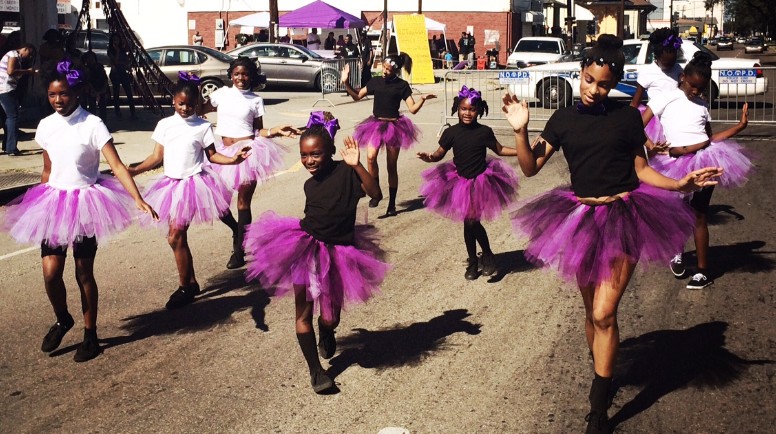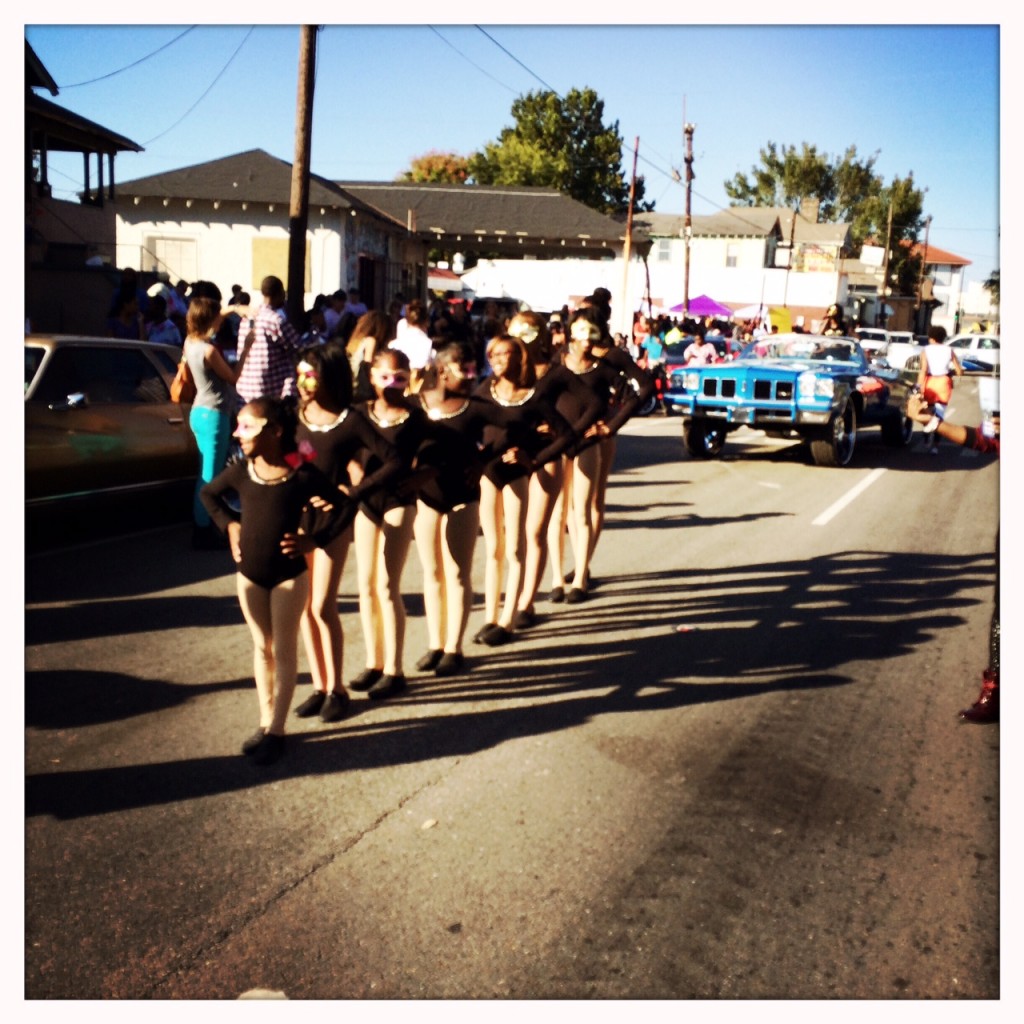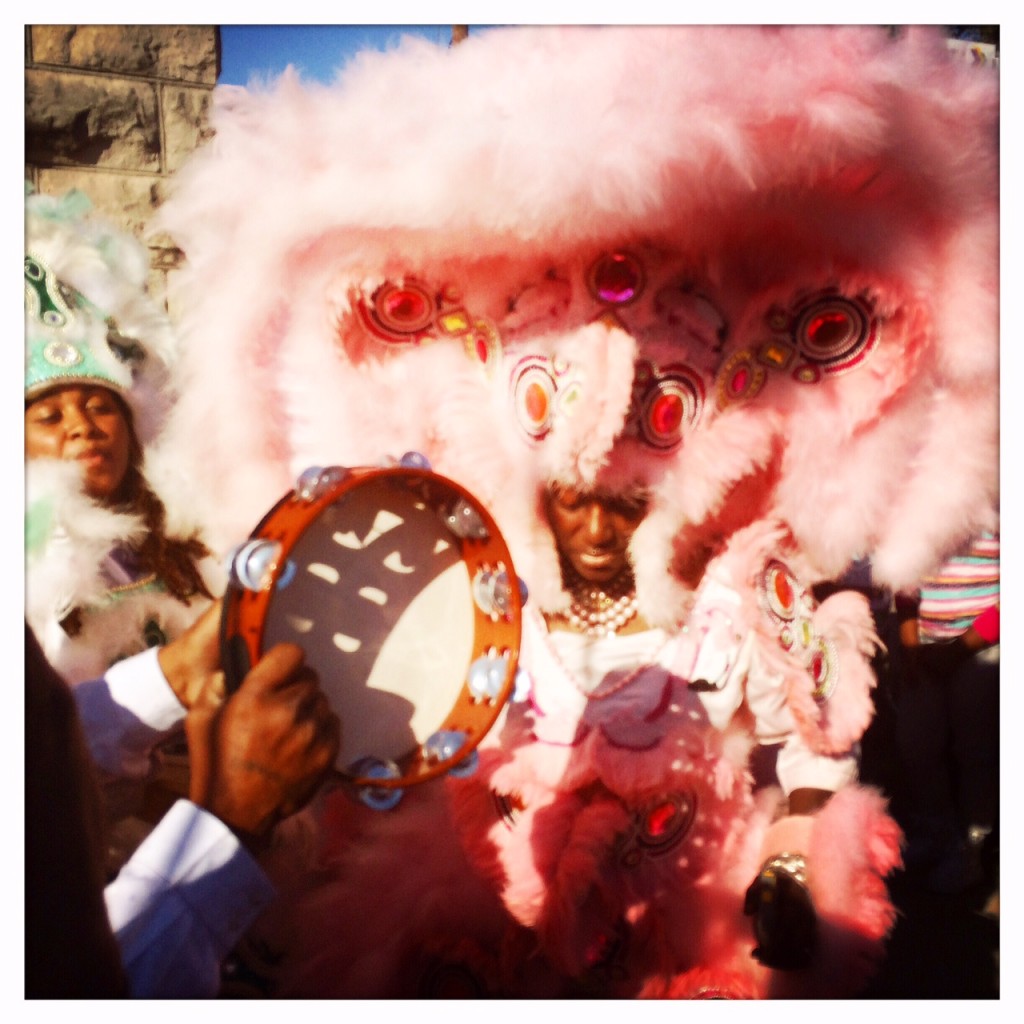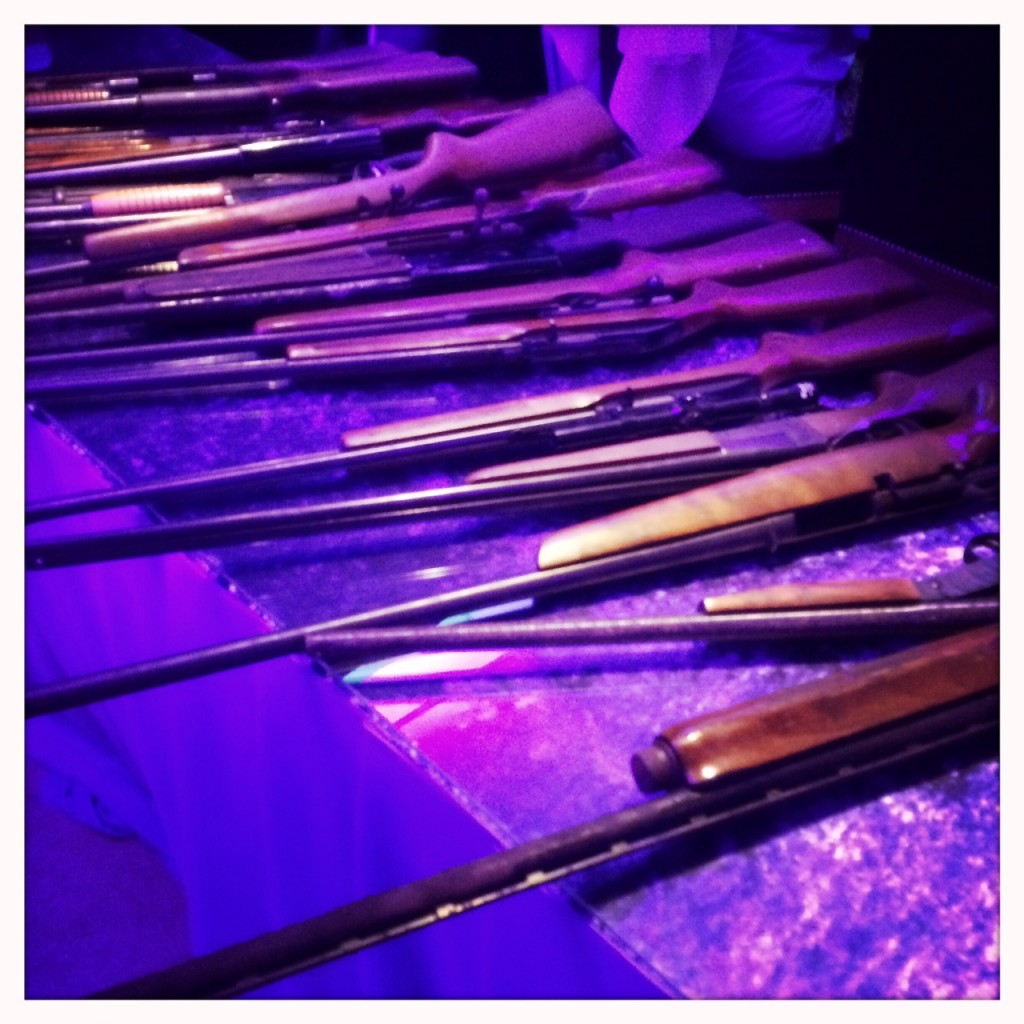Photography by Lisa Lozano
New Orleans’ biggest gun buyback was held last weekend, and it was a party. Art curator and artist Kirsha Kaechele and others brought together the community–as well as artists, musicians and performers–to create a gun buyback block party event where hundreds of guns were bought back from anonymous community members by reverends singing gospel in an all velvet room to the sounds of a solo cellist.
Kaechele, who has been close to the New Orleans community for years, told us about how the event, hosted in the Creole-roots “back of town” 8th Ward–an area where gun death statistics are on par with those during wars–went down New Orleans style. The street party included a beautifully choreographed opening ceremony by New Orleans Airlift with Mardi Gras Indians, Caramel Curves, custom cars and the best local rappers, all of whom are now collaborating on an album against gun violence.
Platinum rapper Mr. Serv On spoke on his involvement in the project: “I want kids that come from where I come from that don’t have a way out to see that their life is like my life, and music is the one thing that got me out- that was my freedom, that’s where my shackles came off. I was up to some bad things too but I found music. I want to give them a chance to win at life like someone gave me one”.
For a group of 8th Ward neighborhood girls, the Betty Squad Gumbo Dancers (pictured in purple and black), the street party was their first debut.
Kaechele also told us about how she came to the idea of holding a gun buyback in this way, about a friend whose life was cut short by gun violence and the influence of the Australian response to the 1996 Port Arthur massacre–a decision to buy back the entire country’s stockpile of guns–and how she decided to use private money to circumvent 2nd amendment issues, bridge the gap between libertarianism and the nanny state, make selling a gun more palatable for those in possession, and let the market promote peace.
Where did you get the idea to buy back guns?
“I lived in New Orleans’ 8th Ward for many years and witnessed what felt like endless deaths of boys who hadn’t had a chance in life. Just as I was moving to Australia my good friend Rayshon was shot–he was 19 and an aspiring musician. I couldn’t believe it happened to him as he had no connection to gangs or the neighborhood’s cycles of honor killings.
“Then, living in Australia I saw no gun violence. After a major Tasmanian massacre in the 1990s the government decided to buy back the country’s entire stockpile of guns. Being American, and having some slight libertarian leanings, I found the nanny state approach distasteful, but at the same time, had to acknowledge it worked. So I found myself with one foot on each side of a great divide.
“On the one hand I believe in personal liberty and feel that gun ownership should be a choice. But on the other I see that America’s approach is not working, and the class system combined with our gun policy is allowing too many innocent boys to die just because they are born in the wrong neighborhood.
“Then I had a breakthrough: What if we use individual liberty and the free market to create gun control? By offering private money we circumvent 2nd amendment issues and let the market promote peace.”
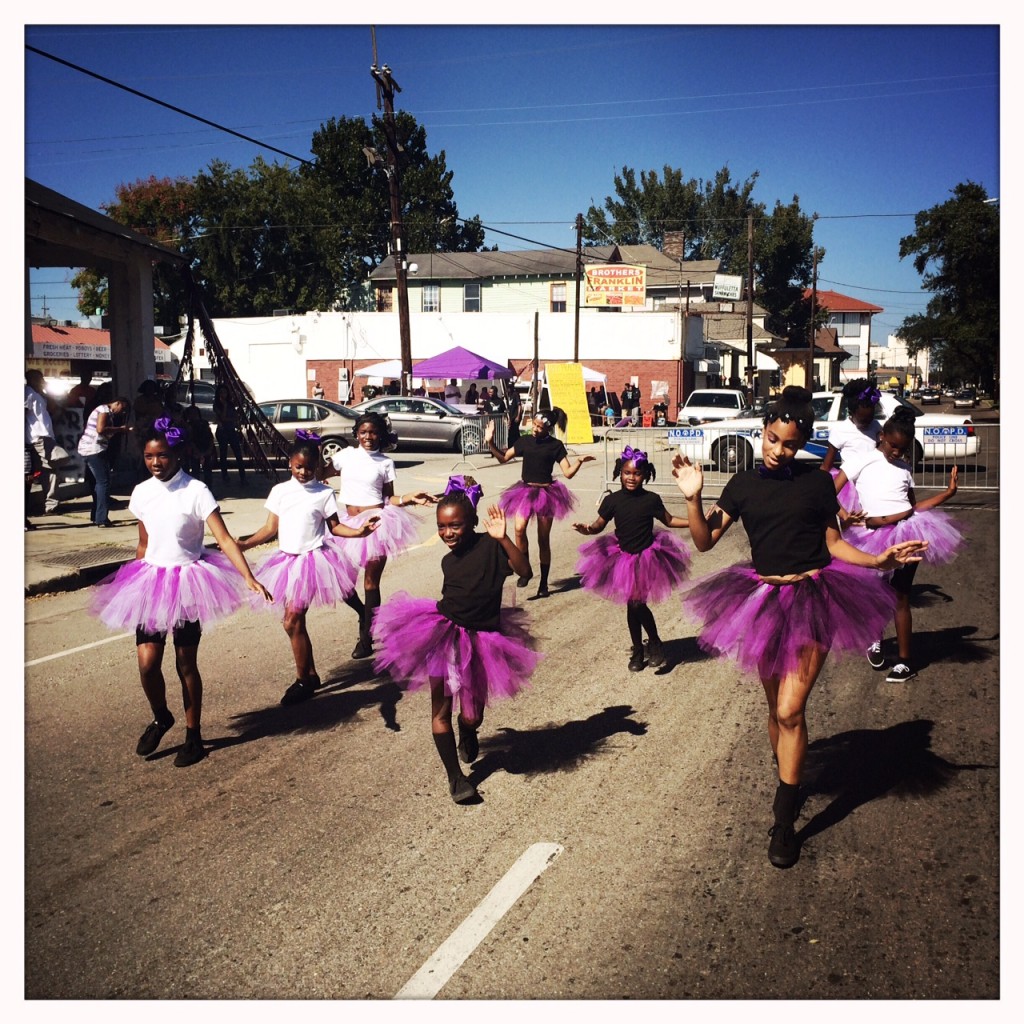
“The key, it seemed to me, was to place the buyback in the center of a high violence area where it is accessible (to both those who choose to sell guns as well as those who steal them–theft is rampant in the neighborhood). It was also essential to have the trust of the neighborhood, which I felt well poised for as I’d lived in the 8th Ward for 10 years and have close ties to the community.
“To further the incentive for trading guns in I partnered with celebrity rappers to create a recording studio (Gun Metal Records) where the neighborhood can lay tracks with their heroes. If anyone can inspire a young man to turn his gun in it is a rapper. That’s who they look up to. The rappers promoted the buyback through radio ads, billboards and fliers they distributed in nightclubs.”
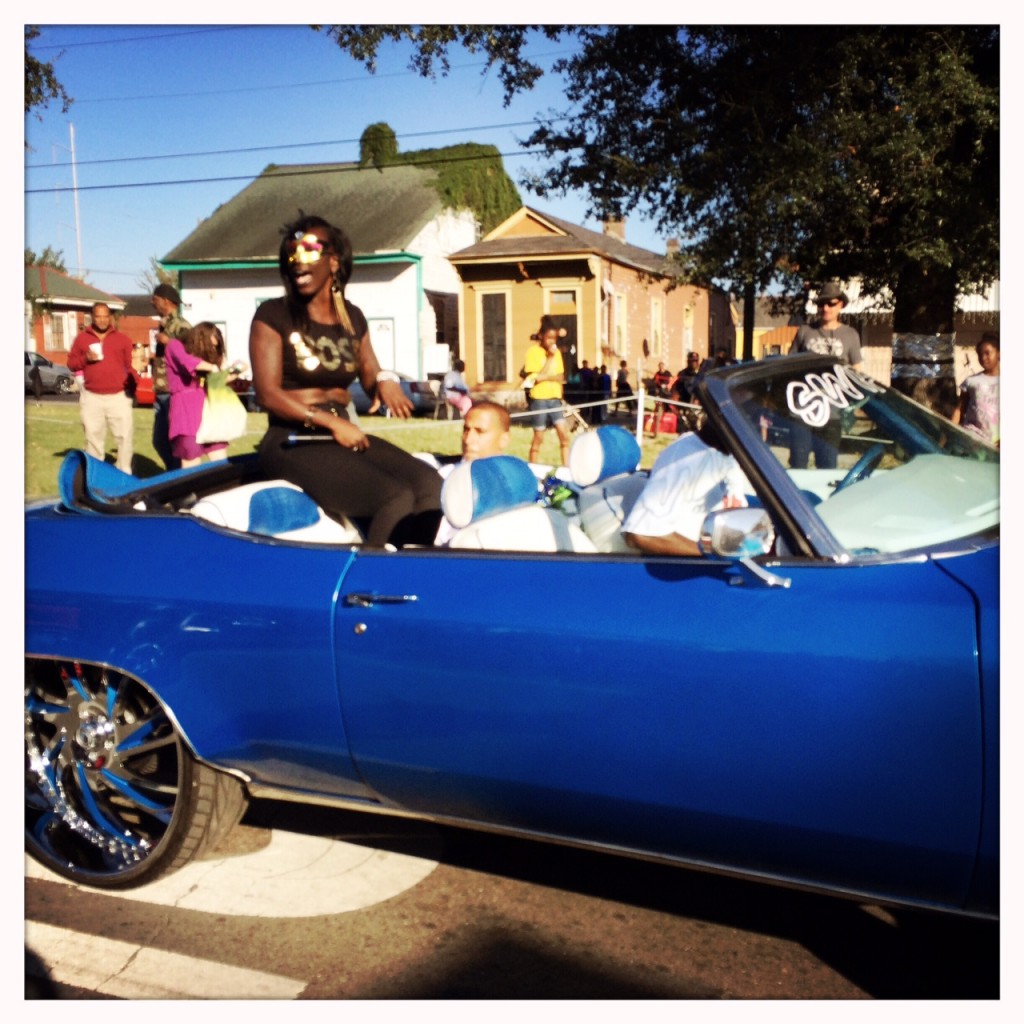
How did you come to decide the best forum would be a “buy back party?”
“Block parties are something New Orleanians do to mark every event. It’s an integral part of the culture. I also felt that tying the buyback to a party would make the idea of selling your gun more palatable. When you have all the best rappers and dancers and your favorite radio DJ out telling you to join the buyback it has greater appeal. It also rallies the neighborhood around the idea that the killing has got to end. I don’t expect gun violence to disappear, but a few young boys may be inspired to look down upon killing as a way of life.”
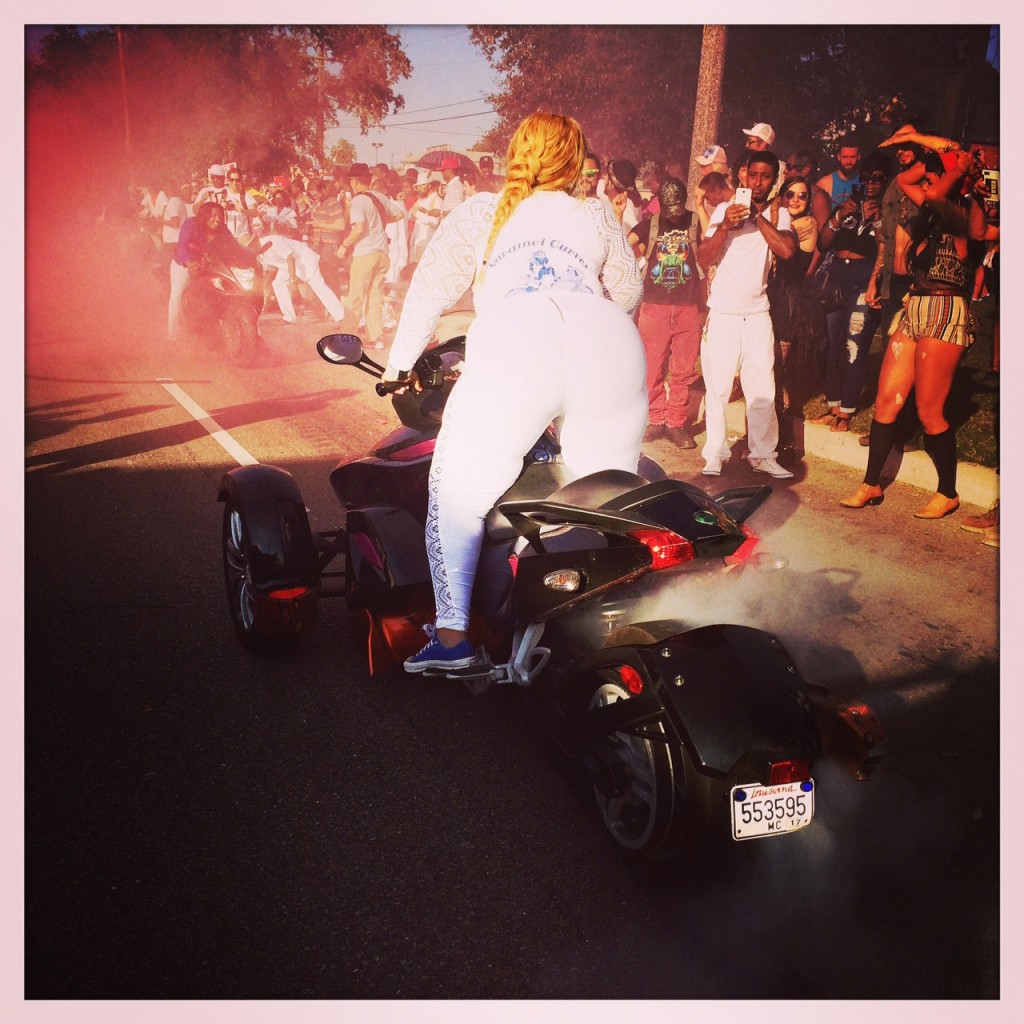
Is the buy back project a result of coming into contact with the environment you moved into in St Roch? Is this an example of life/work leads to a new environment leads to a new kind of art?
“Absolutely! Living in the 8th Ward was one hundred percent my inspiration for this project, and in particular, losing Rayshon whom I thought would be my friend for life. Art is a reflection of our experience; in some practices it is our experience. Becoming part of the neighborhood ecology inspired me to use the biennial to shine light into the problem of youth mortality in the 8th Ward–and as I’ll later discuss, the problem of personal disenfranchisement in privileged white culture ;) I am not particularly political, in fact I have always hated political art. I’ve specifically noted in Life is Art writings how much I hate it, but what can I say? You become what you hate.
“That being the case: I don’t think it is acceptable that we allow neighborhoods in America to languish like we do in St Roch. The gun death statistics there are the same as they are in war. And it is certainly not all about access to guns. We’ve really let our fellow Americans slip through the cracks in a way that more socially minded 1st world countries would never do.
“That said, the community has an incredible resilience and bright vitality. The 8th Ward can teach us a lot about how to live as a connected, mutually supportive culture. It is completely different from the modern American way where we have very little interaction with our neighbors. In this way, coming to the 8th Ward and witnessing the close ties in the community is incredible. Simply witnessing this was a highlight of the Biennial.”
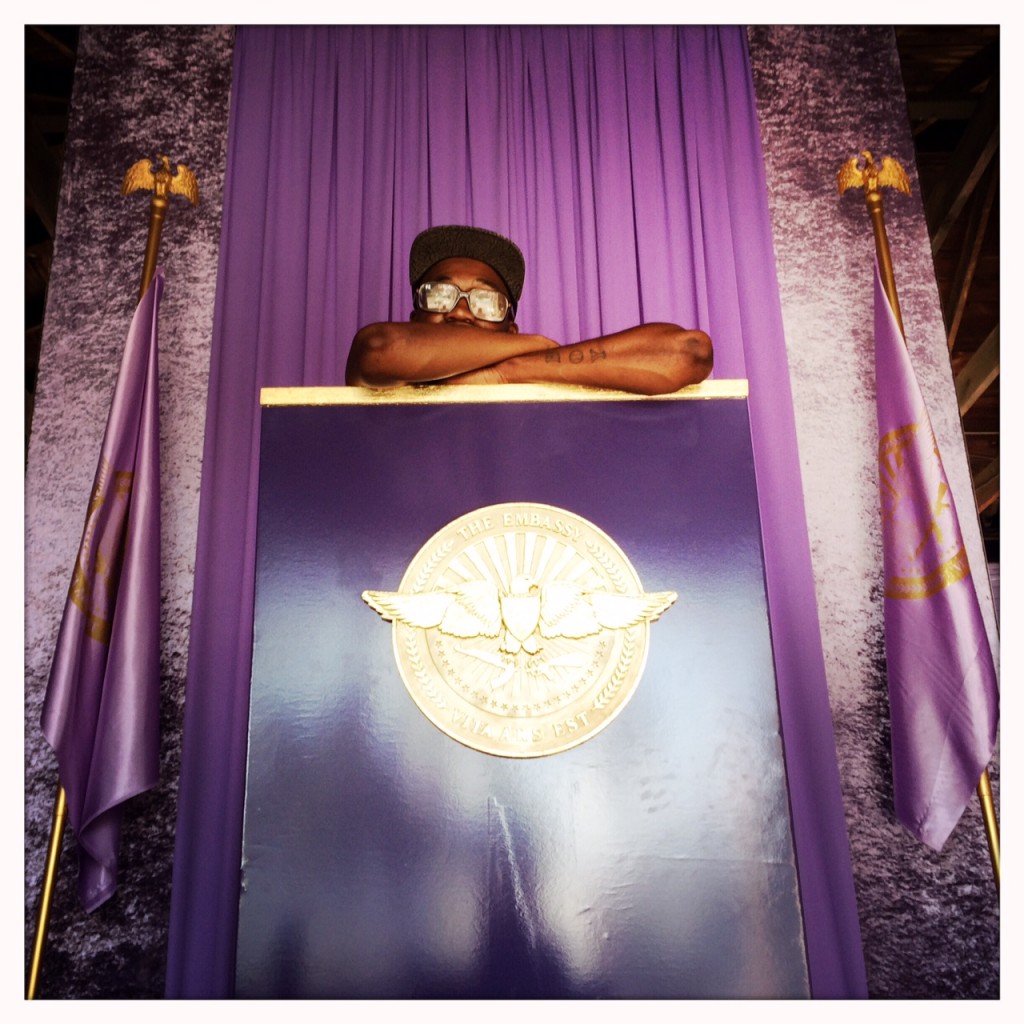
How did the buy back party go? Could you describe it from the perspective of an art viewer?
“The block party was touching and awe-inspiring. There was a very warm, amplified energy with all the neighbors out for a common cause. I think the art viewers were a little blown away by the power of the culture. You had Mardi Gras Indians, Caramel Curves, a custom car show, performing horse riders, the best local rappers, dance troupes–all the highlights of New Orleans’ culture. New Orleans Airlift, a group of local artists and curators, did a beautiful job choreographing the opening ceremony. I think out of town visitors were overwhelmed. Many approached with tears in their eyes saying they had never seen anything like it. I’m glad we got to share a little of what New Orleans has to offer with the high art world. It also felt satisfying and a little subversive to highlight what is already here, as opposed to the usual biennial approach of bringing famous international artists into an environment. (That said we also showed several international artists through performance, our billboards advertising the buyback, and The Embassy interior. They were all really touched by the collaboration with local artists.)”
The buyback
“The buyback itself was magical. There was a line around the block of very nervous, agitated people. But as soon as they entered the room they grew hushed. It was very quiet and dark with lights only on the piles of guns and a sculpture (by Louise Riley). In the back of the all-velvet room a solo cellist played softly and beautifully. There was a sense of ceremony and reverence around the whole experience. Those trading in their guns became part of the piece; some sellers lingered, mesmerized by it all. We received 500 guns. I personally took in several assault weapons which was disturbing but also moving.
“People wanted to share the stories of their guns. Many wives and girlfriends came on behalf of their partners, or to get rid of a gun that belonged to their dead partner. By 4 p.m. the reverends accepting the guns were exhausted–I hired one of their gospel singers to perform just to keep them going (they all joined in singing and clapping) and we closed at 5–still with half the cash (!) ready for round 2.”
–
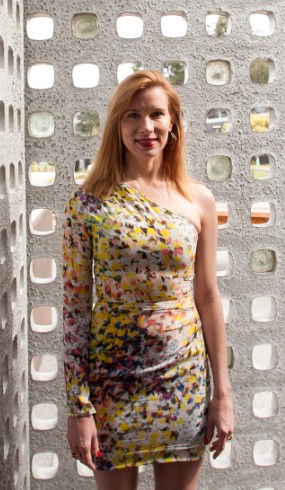
Kirsha Kaechele is an art curator and artist, and is the founder of Life is Art Foundation/KKProjects, an art space composed of six abandoned houses in the St Roch neighborhood, and The Embassy, a living installation in the 8th Ward of New Orleans.
The Embassy is a collaboration of artists, rappers and reverends for the purpose of inspiring the hearts and minds of New Orleans youth, to celebrate the vitality and creativity of the community and broach the tragedy of youth mortality through gun violence.
The Embassy’s gun buyback project is the biggest buyback in New Orleans history.
The Embassy provides $100,000 solely for puchasing guns from sellers who remain anonymous. The guns are later destroyed by the Police Department, witnessed by the New Orleans and Jefferson Parish Gun Buyback Committee (GNOJPGBC).
.
Additional Photography: NEWSCORP
.
